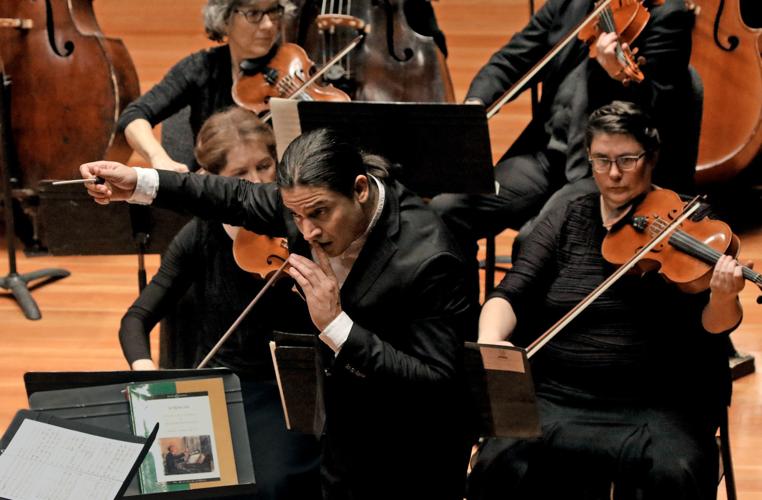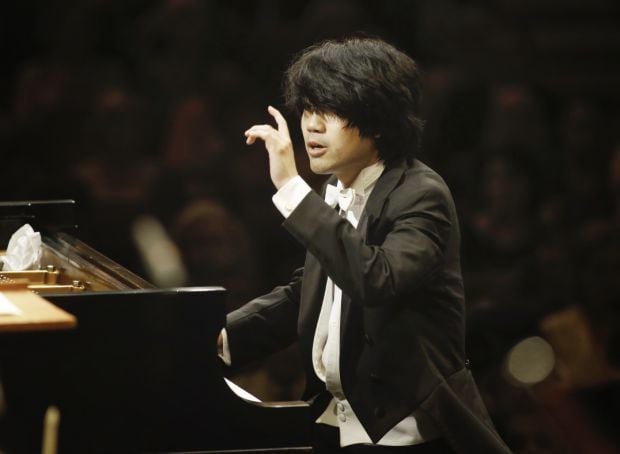Beethoven’s Fifth Symphony is arguably the greatest piece of music ever composed.
José Luis Gomez will go one step further: “This symphony seems to be included in the DNA of humanity,” the Tucson Symphony Orchestra music director proclaimed.
The four-note opening motif — the thunderous ba, ba, ba, bum! — is fate knocking and what follows is humanity answering.
“It’s alive,” Gomez said of the symphony, one of eight Beethoven symphonies the TSO is doing this season to celebrate the 250th anniversary of Beethoven’s birth. “We are very fortunate to put our hands in music of such great masterpieces as this.”
The only one of Beethoven’s nine symphonies not programmed this season is the Ninth, which the TSO performed in spring 2018. So far this season, the orchestra has performed the Seventh and Fourth symphonies. They will do Nos. 8 and 2 in January; 1 and 6 in early February; and close out the symphonies with No. 3, “Eroica” in late February.
“If you want to do all of the Beethoven’s symphonies, you’re going to do the Fifth,” Gomez said from Elgin, Illinois, late last month where he was guest conducting the Elgin Symphony Orchestra. “Skipping it would be sacrilegious to his legacy. I think the Fifth is that milestone that stands high on” the list of most significant symphonic works in history.
Beethoven wrote the Fifth when he was in his mid-30s as he was beginning to lose his hearing. The piece was instantly praised by critics of the day including E.T.A. Hoffman, who called it the “indescribably profound, magnificent symphony in C minor.”
“The Fifth has that level of maturity and intensity, and the energy that embodies that symphony is very unique and that makes it stand alone in the whole cycle,” Gomez said.
The Fifth also is that symphony that no matter if you’ve never stepped foot in a symphony hall or heard an orchestra perform, you are familiar with the music. The opening motif has been co-opted in commercials including for the sixth generation Intel Processor; movies including a disco version of the song featured in “Saturday Night Live;” and rock music including Electric Light Orchestra’s “Roll Over Beethoven” that incorporates those ubiquitous four notes.
“That symphony is so iconic that if you want to bring a first-timer to a symphony concert, the Fifth will be a fantastic representation of what we do,” Gomez said.
Gomez paired the Fifth with Venezuelan composer Antonio José Estévez’s “Mediodía en el Llano” and French composer Camille Saint-Saëns’s Piano Concerto No. 2, featuring the return of guest pianist Sean Chen, who appeared with the TSO in 2015.
“You are going to hear something that you know for sure” — Beethoven’s Fifth — “but before, you get the experience of discovering something you’re not familiar with and that you are going to love the same way as you are going to love Beethoven Five,” Gomez said.
Gomez has performed Beethoven’s Fifth a number of times in his career, going back to his days as a student learning to conduct. But every time he picks up the score, he learns something new that informs his performance. He is quick to note, however, that he has never really strayed far from his overriding philosophy when it comes to the Fifth.
“Let Beethoven say it. Don’t add anything but what he wrote,” he explained. “You let the symphony start with that drive, that intensity, that tempo. Those four beats — ba, ba, ba, bum! Just let it burst with the thought that Beethoven had in his head. That’s the only way to approach it.”





